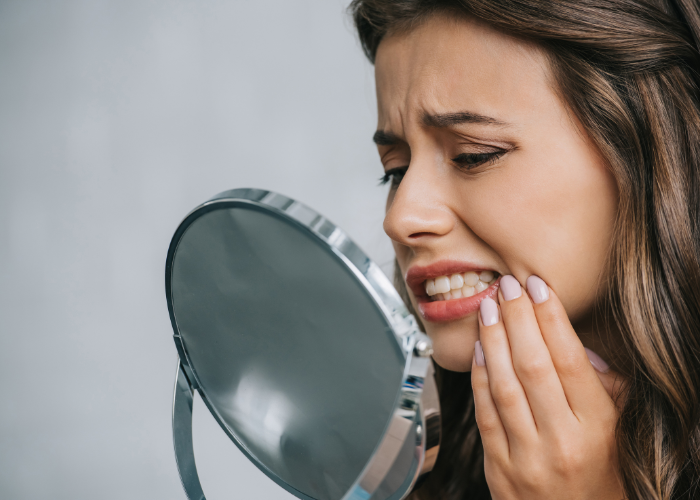How to Reduce Swelling from Your Wisdom Teeth Removal
If you have been booked in for a wisdom tooth extraction, it is important to be aware that you may experience swelling after the removal. Swelling is a natural part of the recovery process following a tooth extraction; however, it can cause pain and discomfort. Here are a number of effective remedies and some recovery advice that will hopefully help you to minimise and reduce swelling from wisdom teeth removal, ensuring an easier and more comfortable recovery.
Immediate Post-Operative Care
Use of Cold Compresses
A cold compress is a traditional yet highly effective method of reducing swelling after wisdom teeth removal. This involves applying an ice pack to the affected area for 15 to 20 minutes at a time, repeating as necessary to help simultaneously reduce pain and swelling. The cold causes blood vessels to constrict, reducing blood flow to the affected area and leading to less fluid build-up, which helps minimise swelling. This should be done for the first 24 to 48 hours.
Rest and Elevation
It is important to rest after any surgical procedure including wisdom teeth removal. By avoiding strenuous activities and prioritising sleep, your body has the opportunity to heal faster. Elevating your head with extra pillows during rest or sleep can promote better blood flow to help reduce swelling and pain.
Managing Swelling in the Following Days
Transition to Warm Compresses
After the first 48 hours of your wisdom teeth removal, it is recommended that you use warm compresses rather than cold ones. Warm compresses increase blood flow to the affected area by dilating blood vessels and encourage any accumulated toxins to be flushed away. If your priority is to reduce swelling from your wisdom teeth removal, this is an important next step.
Stay Hydrated and Maintain Nutrition
Drinking plenty of water is important for good oral health and can help speed up the recovery process and reduce swelling after wisdom teeth removal. Water helps reduce bacteria in the mouth and prevents further infection. Your dentist is likely to advise that you should start with soft foods and avoid hot drinks, sticky treats and spices post-extraction to allow your gums to heal and prevent excess bleeding or discomfort. Maintaining a healthy diet and increasing your vitamin and mineral intake may help to boost your immune system and speed up your recovery, although these practices are most useful when implemented for some time before your procedure.
Maintaining Oral Hygiene and Follow-Up Care
Gentle Rinsing
Rinsing your mouth with salt water or mouthwash on a regular basis is beneficial to your dental health. It is highly recommended to do so the day after your extraction to help keep your mouth clean and reduce bacteria. You may be advised to use a medicated mouthwash tailored to promote healing and reduce swelling after your wisdom teeth removal. This can be repeated two to three times a day. It is important to rinse and spit gently to avoid dislodging any blood clots, which can cause bleeding and slow down the recovery process.
Adhere to Medication Routines and Follow-Up Visits
Your dentist will put together an individually tailored treatment plan for you. Adhering to the advised protocols regarding medications such as antibiotics and pain relief are not only important for promoting faster healing and reduction of swelling after your wisdom teeth removal, but also to prevent complications such as infections later on.
You are likely to have a follow-up appointment scheduled with your dentist so they can examine the site and ensure that it has healed correctly. They may prescribe further medication if necessary and will advise on good dental hygiene techniques to manage the extraction area. If during the recovery process you experience any unusual symptoms such as excessive bleeding, severe pain, or signs of infection, it is important to speak to your dentist as soon as possible.


_1_o.jpg)
 Over the last few years the healthcare sector, including the dental industry, is investing more time, money and education into sustainability and environmentally friendly practices. It is important that this continues at a steady rate and that more dental clinic implement green practices, both to attract more patients and to reduce their significant carbon footprint. Environmentally-conscious patients are interested in eco-friendly dentistry, knowing that whilst looking after their dental health by choosing green practices they are also helping to look after the environment.
Over the last few years the healthcare sector, including the dental industry, is investing more time, money and education into sustainability and environmentally friendly practices. It is important that this continues at a steady rate and that more dental clinic implement green practices, both to attract more patients and to reduce their significant carbon footprint. Environmentally-conscious patients are interested in eco-friendly dentistry, knowing that whilst looking after their dental health by choosing green practices they are also helping to look after the environment._0_o.jpg) Even the best-fitting dentures (as they all should be) take getting used to and it will take time to adjust to the strangeness of the new artificial teeth. It is only to be expected that there will be some initial denture discomfort and even mild pain, but this should pass quickly as the mouth and jaw become accustomed to the new oral configuration.
Even the best-fitting dentures (as they all should be) take getting used to and it will take time to adjust to the strangeness of the new artificial teeth. It is only to be expected that there will be some initial denture discomfort and even mild pain, but this should pass quickly as the mouth and jaw become accustomed to the new oral configuration._0_o.png) Teeth grinding is a subconscious act that involves grinding, gnashing, or clenching your teeth. Also called bruxism, it is a condition that can cause pain in the jaw, headaches and damage to your teeth.
Teeth grinding is a subconscious act that involves grinding, gnashing, or clenching your teeth. Also called bruxism, it is a condition that can cause pain in the jaw, headaches and damage to your teeth.
 Did you know that gum disease (also known as gingivitis) is one of the most common oral health conditions in adults. Believe it or not, more than 47 percent of individuals above the age of 30 suffer from this ailment.
Did you know that gum disease (also known as gingivitis) is one of the most common oral health conditions in adults. Believe it or not, more than 47 percent of individuals above the age of 30 suffer from this ailment.


